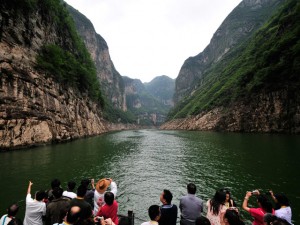
Tour Code: YR02
Destinations: Beijing, Yangtze River Cruise, Xian, Guilin
Departure: Daily
Duration: 11 days
Language: English
Please send your enquiry by email or phone.
Details (B=Breakfast, L=Lunch, D=Dinner)
Day 01 Arrive Beijing
Our local representative will meet you outside baggage claim and transfer by private vehicle to your hotel for check –in. Afternoon visit Temple of Heaven & tour Hutongs in rickshaw.
Evening is at leisure.
The Temple of Heaven is the most holy of Beijing’s Imperial temples. For this is where the Emperor came every winter solstice to worship heaven and to solemnly pray for a good harvest. Since his rule was legitimised by a mandate from heaven, a bad harvest could be interpreted as his fall from heaven’s favour and threaten the stability of his reign. So, it was not without a measure of self-interest that the Emperor fervently prayed for a very good crop.
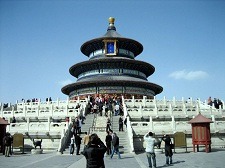
Hutongs came from the Mongolian language about 700 years ago. The original Mongolian word was hottog, meaning “water well.” In other words, it means a place where people live, because people always gather where there is water. Today in Beijing, the word hutong means a small alleyway or lane. They are typical of the old part of Beijing and are formed by lines of siheyuan (a compound made up of rooms around a courtyard) in which most Beijing residents used to live.
Day 02 Beijing B.L
Morning visit to Tian’anmen Square & Forbidden City .Afternoon visit to the Summer Palace.
Tiananmen Square is the largest public square in the world. It has long been a gathering place for locals and visitors alike. On the north side of the square is Tiananmen Gate (the Rostrum). It was from the balcony of the Rostrum on October 1st, 1949 where Mao Zedong, chairman of the Communist Party, proclaimed the founding of the People’s Republic of China. Mao gazes south from a huge portrait on the south side of the gate onto Tiananmen Square.
Forbidden City, also called Imperial Palace Museum, is located in the very heart of Beijing. It remained the residence of the emperors for nearly five hundred years, from the 15th century to the early 20th century, and was the actual and symbolic seat of imperial power. Popularly known as the Forbidden City, it was built in the Ming Dynasty between the 4th and the 18th years of the Yongle period (1406 – 1420 AD). Many of the buildings of the Palace have been repaired and rebuilt, but their basic form and layout remain in their original state.
The Summer Palace located ten kilometres to the northwest of Beijing and used to be a summer residence of Qing Dynasty emperors and is now a public park. It is an imperial garden known far and wide for its architectural grandeur and stunning natural beauty. Equally famous as the Forbidden City, the Summer Palace is called “Yiheyuan” (Garden of Nurtured Harmony) in Chinese. It is up to now the best preserved and the largest imperial gardens in China. You may regret it if you come to Beijing and miss visiting these gardens.
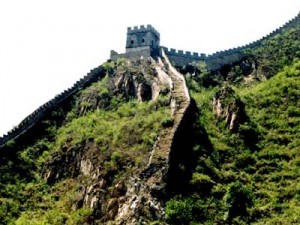
Day 03 Beijing B.L
Full day visit Great Wall Juyongguan Pass, Changling Tomb & Spirit Way.
The Great Wall of China was built mainly to protect the Chinese Empire from the Mongolians and other invaders. The Wall has been periodically rebuilt and modified throughout history by each reigning Chinese dynasty. Credited with the consolidation of the Walls, Shi Huangdi created the Great Wall, which at the time was known as the Wan Li Chang Cheng (Ten Thousand Li Long Wall). It twists and winds along hill crests, gorges, and rivers. At its greatest, it reached from the China Sea town of Shanhaiguan, over 3,000 miles westward into the Gansu province. To put this in perspective, it would stretch from Los Angeles to Boston, or, from London to beyond the Urals mountain chain which separates Europe from Asia.
At a distance of 50 km northwest of Beijing stands an arc-shaped cluster of hills fronted by a small plain. Here is where 13 emperors of the Ming dynasty (1368-1644) were buried, and the area is known as the Ming Tombs. Changling is the tomb of the 3rd emperor of the Ming Dynasty and is now a museum to house treasures excavated from neighboring tombs.
In the front part of the imperial necropolises, there usually is a Way of Spirit (or Divine Road) which means the road leading to heaven. The Emperor, known as the Son of the Heaven, who came from Heaven to his country through the Way of Spirit, also deservedly would return to Heaven through this road.
Day 04 Beijing-Chongqing B.D
This morning visit Lama Temple. After lunch transfer to airport for flight to Chongqing.
You will met and transfer to pier to board cruise ship.
With a history of over 3,000 years, Chongqing, the birthplace of Ba and Yu culture is one of the least well known but most important historical cities in all of China. Today, little of this interesting past is visible and the city is essentially an industrial mass.Much of it is dirty and seedy but there is a lively atmosphere prevalent about the place that often goes hand in hand with the more “hardcore” cities in China. The area known as Chongqing became the capital of the Ba State in the 11 century BC under the mythical King of the Yu. In 1997, Chongqing separated from Sichuan to become an independent prefecture in its own right. Today, this vast southwestern dynamo is known as Chongqing Municipality.
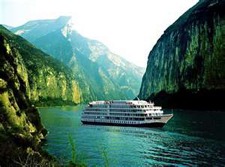
Day 05 Yangtze River Cruise B.L.D
On board with shore excursions
Day 06 Yangtze River Cruise B.L.D
06On board with shore excursions
Day 07 Yichang-Xi’an B
Arrive Yichang, you will met and take a short city tour.
Afternoon transfer to airport for flight to Xi’an, met and transfer to Hotel.
Xi’an, strategically set on the Silk Road trade route that once linked central Asia to Europe, Xi’an was the largest city in the world during the Tang dynasty (618-907.) Although the city is quite modernized, Xi’an has retained many of the historical remnants of its past glory. The main tourist attractions include The Terra cotta Warriors and Horses,
Great Wild Goose Pagoda, Huaqing Pool, BanPo Site and Mosque. Xi’an was the starting point of the Old Silk Road that extended from Asia to Europe and played an important role in cultural inter flow between the East and West in ancient times.
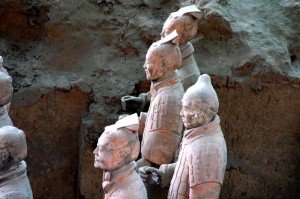
Day 08 Xi’an B.L
Full day you will visit to Terra Cotta Museum, Banpo Neolithic Village & Huaqing Hot Springs.
Terracotta Museum A terracotta army guarding the tomb of Qin Shi Huangdi, which lures travelers from all over the world. In a quest for immortality and eternal power, China’s first emperor chose to have himself buried with some 8,000 life-size, intricately carved soldiers, horses, and chariots. Discovered by farmers digging a well in 1974, the terracotta army then wore painted uniforms, but exposure to the air and sun has turned them black.
The Banpo Museum is the first on-site prehistoric museum in China. Banpo site is a typical Neolithic Matriarchal community of the Yangshao Culture( 5000-3000 BC) around 6000 years ago. About 400 sites of this type have been discovered around the Yellow River Basin and the Banpo site is the largest one.
Huaqing Pool is situated about 35 kilometres east of the city of Xi’an. Historically, the Western Zhou dynasty saw the construction of the Li Palace on the spot. In the Qin dynasty a pool was built with stones, and was given the name Lishan Tang (the Lishan Hot Spring). The site was extended into a palace in the Han dynasty, and renamed the Li Palace (the Resort Palace). In the Tang dynasty, Li Shimin (Emperor Tai Zong) ordered to construct the Hot Spring Palace, and Emperor Xuan Zong had a walled palace built around Lishan Mountain in the year of 747.
Day 09 Xi’an-Guilin B.L
Morning visit to the Big Wild Goose Pagoda & Ancient City Wall,
Late afternoon transfer to airport for flight to Guilin,
You are met and transfer to Guilin Hotel.
As the symbol of the old-line Xian, Big Wild Goose Pagoda is a well-preserved ancient building and a holy place for Buddhists. Originally built in 652 during the reign of Emperor Gaozong of the Tang Dynasty (618-907), it functioned to collect Buddhist materials that were taken from India by the hierarch Xuanzang.
Xian Ancient City Wall is the most complete city wall survived in China as well as one of the largest ancient military defensive systems in the world. The wall was built in the Tang dynasty (618 -907) and enlarged in the Ming dynasty (1368-1644). The construction of the Xian City was formally started in the seventh year of Emperor Hongwu reign (1374) and completed in the eleventh year of Hongwu reign (1378).
Guilin is regarded in China as the country’s most picturesque city. Two crystal-clear rivers meander through the city, which is encircled by mountains with unusual & bizarre rock formations and caves. Two crustal movements of the earth took place about 200 and 180 million years ago thrusting the limestone sediments out of the sea bottom. They were forced upwards more than 200 meters to the surface. This karst formation was moulded through many years of erosion by the wind and rain to became the hills and rocks with unusual shapes . There are many complete karst (Limestone sites), which are of high scientific value and tourist value.
Day 10 Guilin-Yangshuo-Guilin B.L
Today you will enjoy Li River cruise from Guilin to Yangshuo. Afternoon vsit the local market. Then return to Guilin.
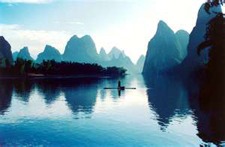
Yangshuo, a small county with its breath-taking beauty and over 1,400 years of history blessed. Streets in Yangshuo are well kept in the original style, presenting the simple and primitive atmosphere of the ancient town. West Street is the most exciting one that locals call the ‘Global Village’. There are not only many foreign tourists, but also quite a number of foreign residents managing cafés and restaurants. The exotic flavor, combined with the traditional culture, make the West Street world famous.
Li River is by far the main reason to visit Guilin. Double-decker and triple-decker river boats which weigh anchor from a pier at Zhujiang, about 40 minutes from Guilin by bus, and meander through the sleepy countryside are relaxing way to enjoy the superlative river scenery and life along its banks. In contrast to the burgeoning cities of the north, it is quiet here; the rural scenery is magnificent. You will enjoy the picturesque mountains, peaceful green fields, farms and villages with water buffalos, cows wondering around on both sides of the river bank.
West Street (Xi Jie) is the oldest street in Yangshuo with a history of more than 1,400 years. Situated at the center of Yangshuo County, West Street has become, since the 1980’s, a window of eastern and western culture and the biggest ‘foreign language center’ in China. West Street is the most prosperous district in Yangshuo, Each year, approximately 100,000 foreigners come here on their travels or to attend advanced studies. Visitors are attracted to West Street by its unique mix of cultures. West Street does not only satisfy you visually.
Day 11 Depart Guilin B
Morning visit Reed Flute Cave & Fubo Hill.
Late afternoon transfer to airport for departure flight by own tickets. End of your China tour.
Service included
A. Hotels (twin share basis) with breakfast
B. Domestic flights or trains as listed in the itinerary.
C. Private car or van with driver
D. English speaking tour guide
E. Entrance fees
F. Meals as listed in the itinerary.
Service excluded
A. International airfare or train tickets.
B. Tips to guides and drivers.
Reservation
Tel: +86 178 1320 5162
E-mail: service@intochinatravel.com
Skype ID: intochinatravel


at 1:00 am
China river cruise ……….list options and some prices please .least expensive but good weather to go.
at 9:21 pm
We are currently visiting shanghai and would like to tour Beijing and yangtze From May 22 or May 23 to May 30. We must catch our international flight on May 30 from Shanghai. Flight leaves at 4 pm on May 30. Do you have a tour that is from May 22 to May 30?
at 3:34 pm
Dear Dana,
Thanks for your inquire.
This is Peter Wang, sales manager of Intochinatravel. According to your request, I customize a Beijing-Yangtze itinerary and have sent you via email.
Regards,
Peter Wang
E-mail: service@intochinatravel.com
at 7:10 am
How much is this package?